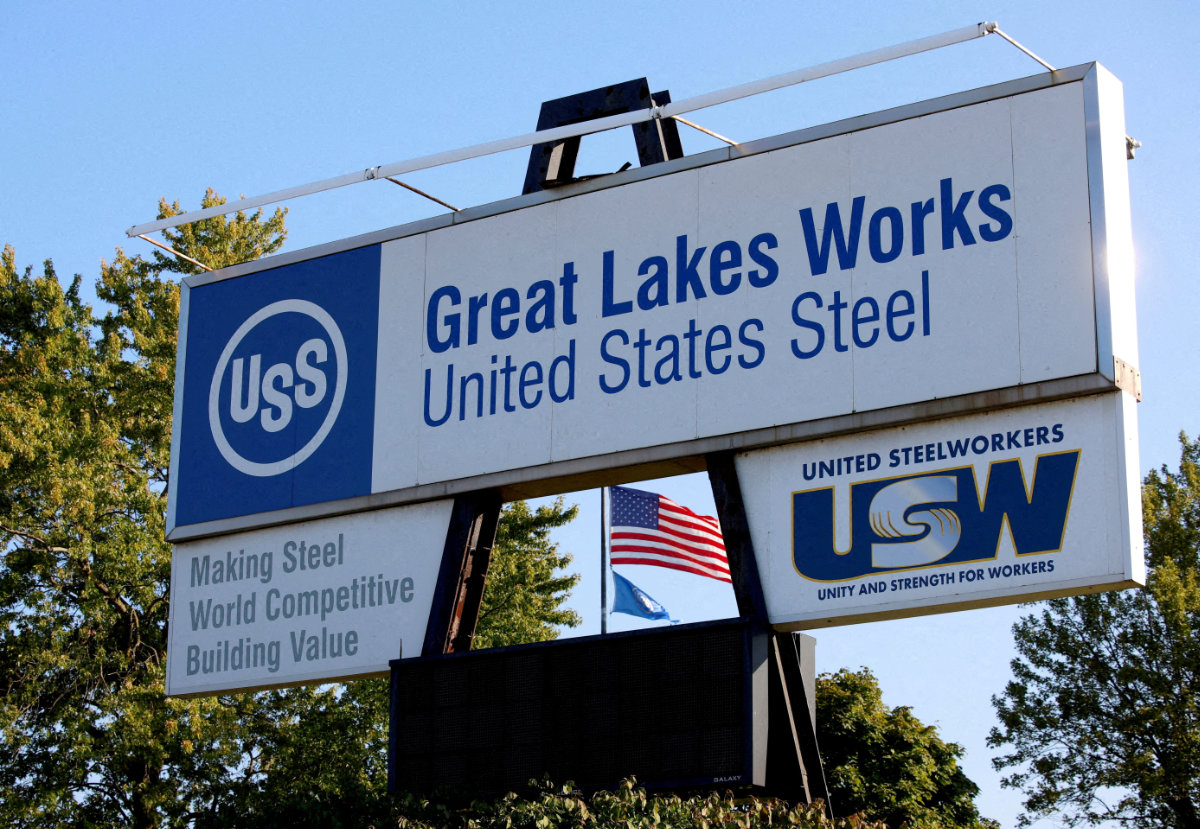NEW YORK: Donald Trump sought to move past his historic criminal conviction on Friday and build momentum for his bid to return to the White House with fierce attacks on the judge who oversaw the case, the prosecution’s star witness and the criminal justice system as a whole.
Speaking from his namesake tower in Manhattan in a symbolic return to the campaign trail, the presumptive Republican presidential nominee delivered a message aimed squarely at his most loyal supporters. Defiant as ever, he insisted without evidence that the verdict was “rigged” and driven by politics.
“We’re going to fight,” Trump said from the atrium of Trump Tower, where he descended a golden escalator to announce his 2016 campaign nine years ago next month. The machinations during the final, dramatic weeks of that campaign ultimately led to the charges that made Trump the first former president and presumptive presidential nominee of a major party to be convicted of a crime, exposing him to potential prison time.
While the guilty verdict has energized Trump’s base, fueling millions of dollars in new campaign contributions, it’s unclear how the conviction and his rambling response will resonate with the kinds of voters who are likely to decide what is expected to be an extremely close November election. They include suburban women, independents, and voters turned off by both candidates.
Speaking before dozens of reporters and cameras that carried his remarks live, Trump cast himself as a martyr, suggesting that if this could happen to him, “They can do this to anyone.”
“I’m willing to do whatever I have to do to save our country and save our Constitution. I don’t mind,” he said, as he traded the aging lower Manhattan courthouse where he spent much of the last two months for a backdrop of American flags, rose marble and brass.
“It’s a very unpleasant thing, to be honest,” he added. “But it’s a great, great honor.”
President Joe Biden, responding to the verdict at the White House, said Trump “was given every opportunity to defend himself” and blasted his rhetoric.
“It’s reckless, it’s dangerous, it’s irresponsible for anyone to say this is rigged just because they don’t like the verdict,” Biden said.
Trump has made his legal woes the centerpiece of his campaign message as he has argued, without evidence, that Biden orchestrated the four indictments against him to hobble his campaign. The hush money case was filed by local prosecutors in Manhattan who don’t work for the Justice Department or any White House office.
A Manhattan jury on Thursday found Trump guilty of 34 charges in a scheme to illegally influence the 2016 election through a hush money payment to a porn actor who said the two had sex.
Despite the historic ruling, a convicted Trump sounded much the same as a pre-convicted Trump, as he delivered what amounted to a truncated version of his usual rally speech. He argued the verdict was illegitimate and driven by politics and sought to downplay the facts underlying the case. He said he would appeal.
“It’s not hush money. It’s a nondisclosure agreement,” he said. “Totally legal, totally common.”
When Trump emerged from the courtroom immediately after the verdict Thursday, he had appeared tense and deeply angry, his words pointed and clipped. But by Friday, he seemed more relaxed — if a little congested — especially as he moved on to other topics. He did not take questions from reporters, marching off as supporters assembled in the lobby cheered.
His lawyer, Todd Blanche, who was with him at Trump Tower but didn’t speak, said in an interview later Friday that he had been “shocked” by how well Trump took the verdict.
“He’s not happy about it, but there’s no defendant in the history of our justice system who’s happy about a conviction the day after,” he said. “But I think he knows there’s a lot of fight left and there’s a lot of opportunity to fix this and that’s what we’re going to try to do.”
Trump has portrayed himself as a passionate supporter of law enforcement and has even talked favorably of officers handling suspects roughly. But he has spent the last two years attacking parts of the criminal justice system as it applies to him and raising questions about the honesty and motives of agents and prosecutors.
In his disjointed remarks, Trump attacked Biden’s immigration and tax policies before pivoting to his case, growling that he was threatened with jail time if he violated a gag order. He cast intricate parts of the case and trial proceedings as unfair, making false statements and misrepresentations as he went.
Trump said he had wanted to testify in his trial, a right that he opted not to exercise. Doing so would have allowed prosecutors to cross-examine him under oath. He raised the specter on Friday of being charged with perjury for a verbal misstep, saying, “The theory is you never testify because as soon as you testify — anybody, if it were George Washington — don’t testify because they’ll get you on something that you said slightly wrong.”
Testing the limits of the gag order that continues to prohibit him from publicly critiquing witnesses including Michael Cohen, Trump called his former fixer, the star prosecution witness in the case, “a sleazebag,” without referencing him by name.
He also blasted the judge in the case, saying his side’s chief witness had been “literally crucified by this man who looks like an angel, but he’s really a devil.”
He also circled back to some of the same authoritarian themes he has repeatedly focused on in speeches and rallies, painting the US under Biden as a “corrupt” and “fascist” nation.
His son Eric Trump and daughter-in-law, Lara Trump, joined him, but his wife, Melania Trump, who has been publicly silent since the verdict, was not seen.
Outside, on Manhattan’s Fifth Avenue, supporters gathered across the street flew a giant red “TRUMP OR DEATH” sign that flapped in front of a high-end boutique. A small group of protesters held signs saying “Guilty” and “Justice matters.”
Trump’s campaign announced Friday evening it had raised $52.8 million in the 24 hours after the verdict. The campaign said one-third of those donors had not previously given to him.
Trump and his campaign had been preparing for a guilty verdict for days, even as they held out hope for a hung jury. On Tuesday, Trump railed that not even Mother Teresa, the nun and saint, could beat the charges, which he repeatedly labeled as “rigged.”
His top aides on Wednesday released a memo in which they insisted a verdict would have no impact on the election, whether Trump was convicted or acquitted.
The news nonetheless landed with a jolt. Trump listened as the jury delivered a guilty verdict on every count. Trump sat stone-faced while the verdict was read.
His campaign fired off a flurry of fundraising appeals, and GOP allies rallied to his side. One text message called him a “political prisoner,” even though he hasn’t yet found out if he will be sentenced to prison. The campaign also began selling black “Make America Great Again” caps, instead of the usual red, to reflect a “dark day in history.”
Aides reported an immediate rush of contributions so intense that WinRed, the platform the campaign uses for fundraising, crashed.
In the next two months, Trump is set to have his first debate with Biden, announce a running mate and formally accept his party’s nomination at the Republican National Convention. But before he goes to Milwaukee for the RNC, Trump will have to return to court on July 11 for sentencing. He could face penalties ranging from a fine or probation up to prison time.
Trump tries to move past his guilty verdict by attacking the criminal justice system
https://arab.news/v37zj
Trump tries to move past his guilty verdict by attacking the criminal justice system





























